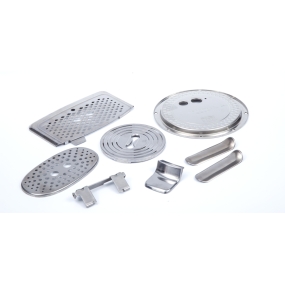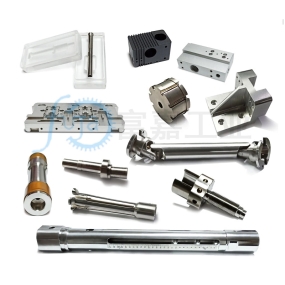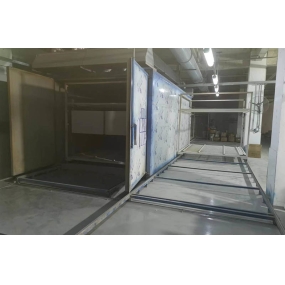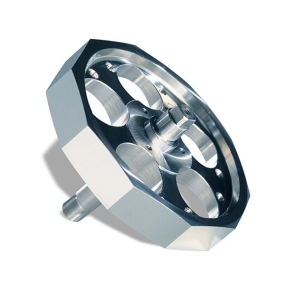Reducing the risk of damage during CNC Machining of aluminum alloys is key to ensuring product quality and production efficiency. Here are some specific measures and suggestions: 1 Reasonable selection of cutting parameters and cutting speed: For CNC machining of aluminum alloys, the appropriate cutting speed should be selected based on the material properties and processing requirements of the aluminum alloy. Excessive cutting speed can lead to tool wear and accumulation of cutting by-products, while excessively low cutting speed can result in low machining efficiency. Feed rate: Choose a reasonable feed rate based on the complexity of the workpiece and processing requirements. Excessive feed rate can lead to excessive cutting force, resulting in workpiece deformation and reduced machining quality; Low feed rate can lead to low processing efficiency. & 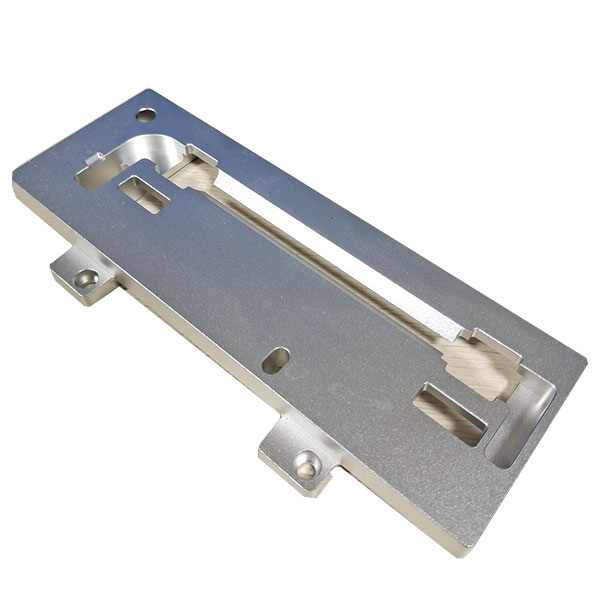 2. org Uter typos instrumentorum et materiales adequatos: Elegite instrumentos adequatos ad machinationem CNC alloys aluminium, quales alta velocitas steela aut instrumenta difficile alloy. Haec instrumenta succidentia alta difficile habent et resistentiam portant, quae effectuale dimittere potest periculum vulnerationis in manipulatione. Geometric parameters of cutting tools: Ensure that the geometric parameters of the tool (such as edge angle, edge radius, etc.) are suitable for machining requirements, in order to reduce vibration and cutting force, and lower the risk of damage. 3. Proper tool cooling and lubrication of cutting fluid: During the CNC machining of aluminum alloy, an appropriate amount of cutting fluid should be used for cooling and lubrication. Cutting fluid can lower cutting temperature, reduce cutting force and workpiece deformation, while also reducing tool wear and damage. Cooling control: Reasonably control the flow rate and temperature of cutting fluid to ensure uniform distribution and continuous supply of cutting fluid. Excessive flow rate can lead to material waste, while insufficient flow rate can result in poor cooling effect. 4. Ensure the stability of clamping and fixing fixture selection: Use appropriate fixtures and fixture forces to ensure the stability and rigidity of the workpiece during aluminum alloy CNC machining. This helps prevent displacement or vibration of the workpiece during the machining process, thereby reducing the risk of damage. Metodo clampionis: Elegite modum clampionis adequatum based on the shape of the workpiece and processing requirements. Ensure even distribution of clamping force to avoid excessive local stress that may cause deformation or damage to the workpiece. 5. Real time monitoring of machining process: During the CNC machining process of aluminum alloy, closely monitor the changes in machining parameters and the working status of the machine tool. Timely detect and handle abnormal situations, such as excessive cutting force, intensified vibration, etc., to avoid damage. Periodic inspection: Regularly conduct processing quality inspection, including workpiece size measurement, surface quality inspection, and material performance testing. This helps to promptly identify potential quality issues and take measures for improvement. 6. Improve design and process optimization of structural design: In the product design phase, avoid unreasonable structures such as sharp corners and significant wall thickness variations to reduce stress concentration and deformation risks during aluminum alloy CNC processing. Optimiza fluxum procedentis: Base on the CNC processing requirements and material characteristics of aluminum alloy, optimize the process flow and processing sequence. Reasonably arrange the connection between processing steps and procedures to reduce the risk of damage during the processing.
2. org Uter typos instrumentorum et materiales adequatos: Elegite instrumentos adequatos ad machinationem CNC alloys aluminium, quales alta velocitas steela aut instrumenta difficile alloy. Haec instrumenta succidentia alta difficile habent et resistentiam portant, quae effectuale dimittere potest periculum vulnerationis in manipulatione. Geometric parameters of cutting tools: Ensure that the geometric parameters of the tool (such as edge angle, edge radius, etc.) are suitable for machining requirements, in order to reduce vibration and cutting force, and lower the risk of damage. 3. Proper tool cooling and lubrication of cutting fluid: During the CNC machining of aluminum alloy, an appropriate amount of cutting fluid should be used for cooling and lubrication. Cutting fluid can lower cutting temperature, reduce cutting force and workpiece deformation, while also reducing tool wear and damage. Cooling control: Reasonably control the flow rate and temperature of cutting fluid to ensure uniform distribution and continuous supply of cutting fluid. Excessive flow rate can lead to material waste, while insufficient flow rate can result in poor cooling effect. 4. Ensure the stability of clamping and fixing fixture selection: Use appropriate fixtures and fixture forces to ensure the stability and rigidity of the workpiece during aluminum alloy CNC machining. This helps prevent displacement or vibration of the workpiece during the machining process, thereby reducing the risk of damage. Metodo clampionis: Elegite modum clampionis adequatum based on the shape of the workpiece and processing requirements. Ensure even distribution of clamping force to avoid excessive local stress that may cause deformation or damage to the workpiece. 5. Real time monitoring of machining process: During the CNC machining process of aluminum alloy, closely monitor the changes in machining parameters and the working status of the machine tool. Timely detect and handle abnormal situations, such as excessive cutting force, intensified vibration, etc., to avoid damage. Periodic inspection: Regularly conduct processing quality inspection, including workpiece size measurement, surface quality inspection, and material performance testing. This helps to promptly identify potential quality issues and take measures for improvement. 6. Improve design and process optimization of structural design: In the product design phase, avoid unreasonable structures such as sharp corners and significant wall thickness variations to reduce stress concentration and deformation risks during aluminum alloy CNC processing. Optimiza fluxum procedentis: Base on the CNC processing requirements and material characteristics of aluminum alloy, optimize the process flow and processing sequence. Reasonably arrange the connection between processing steps and procedures to reduce the risk of damage during the processing.
Salve! Welcome to the EMAR company website!
 Latin
Latin » »
» »
 English
English Spanish
Spanish Arabic
Arabic Portuguese
Portuguese Belarusian
Belarusian Japanese
Japanese Russian
Russian Icelandic
Icelandic Bulgarian
Bulgarian Azerbaijani
Azerbaijani Estonian
Estonian Irish
Irish Polish
Polish Persian
Persian Boolean
Boolean Danish
Danish German
German French
French Filipino
Filipino Finnish
Finnish Korean
Korean Dutch
Dutch Galician
Galician Catalan
Catalan Czech
Czech Croatian
Croatian Latvian
Latvian Romanian
Romanian Maltese
Maltese Malay
Malay Macedonian
Macedonian Norwegian
Norwegian Swedish
Swedish Serbian
Serbian Slovak
Slovak Slovenian
Slovenian Swahili
Swahili Thai
Thai Turkish
Turkish Welsh
Welsh Urdu
Urdu Ukrainian
Ukrainian Greek
Greek Hungarian
Hungarian Italian
Italian Yiddish
Yiddish Indonesian
Indonesian Vietnamese
Vietnamese Haitian Creole
Haitian Creole Spanish Basque
Spanish Basque



